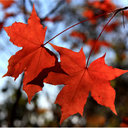Diversity and functionality of arbuscular mycorrhizal fungi in three plant communities in semiarid Grasslands National Park, Canada.
Keywords
Abstract
Septate endophytes proliferating in the roots of grasslands' plants shed doubts on the importance of arbuscular mycorrhizal (AM) symbioses in dry soils. The functionality and diversity of the AM symbioses formed in four replicates of three adjacent plant communities (agricultural, native, and restored) in Grasslands National Park, Canada were assessed in periods of moisture sufficiency and deficiency typical of early and late summer in the region. The community structure of AM fungi, as determined by polymerase chain reaction-denaturing gradient gel electrophoresis, varied with sampling time and plant community. Soil properties other than soil moisture did not change significantly with sampling time. The DNA sequences dominating AM extraradical networks in dry soil apparently belonged to rare taxa unreported in GenBank. DNA sequences of Glomus viscosum, Glomus mosseae, and Glomus hoi were dominant under conditions of moisture sufficiency. In total, nine different AM fungal sequences were found suggesting a role for the AM symbioses in semiarid areas. Significant positive linear relationships between plant P and N concentrations and active extraradical AM fungal biomass, estimated by the abundance of the phospholipid fatty acid marker 16:1 omega 5, existed under conditions of moisture sufficiency, but not under dry conditions. Active extraradical AM fungal biomass had significantly positive linear relationship with the abundance of two early season grasses, Agropyron cristatum (L.) Gaertn. and Koeleria gracilis Pers., but no relationship was found under dry conditions. The AM symbioses formed under conditions of moisture sufficiency typical of early summer at this location appear to be important for the nutrition of grassland plant communities, but no evidence of mutualism was found under the dry conditions of late summer.


